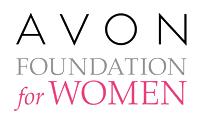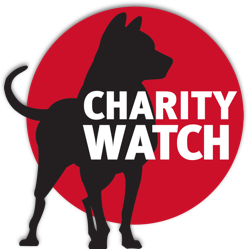"One thing we know for sure--consumers are paying more attention to cause messages, and as a result, are more likely to purchase. This is clearly great news for brand managers, as every percentage increase can translate to millions of dollars in revenue."
-- October 2008 press release by marketing company Cone Inc. in reference to its consumer behavior study
 Avon Products Foundation (APF) is perhaps best known among donors for its Avon Walk for Breast Cancer held in many large cities across the nation each year. The charity is named after Avon Company (Avon), the famous cosmetics giant that founded it in 1955 and that provides millions in donations and other support to the charity each year. Like Susan G. Komen Race for the Cure, another popular charity that holds events for breast cancer causes, APF uses its walks as a way to raise both breast cancer awareness and contributions for its charitable programs. The charity's close ties to its for-profit counterpart, however, may cause some to question whether the publicity the charity garners for its popular walks does as much to raise consumer awareness for Avon products as it does for breast cancer causes.
Avon Products Foundation (APF) is perhaps best known among donors for its Avon Walk for Breast Cancer held in many large cities across the nation each year. The charity is named after Avon Company (Avon), the famous cosmetics giant that founded it in 1955 and that provides millions in donations and other support to the charity each year. Like Susan G. Komen Race for the Cure, another popular charity that holds events for breast cancer causes, APF uses its walks as a way to raise both breast cancer awareness and contributions for its charitable programs. The charity's close ties to its for-profit counterpart, however, may cause some to question whether the publicity the charity garners for its popular walks does as much to raise consumer awareness for Avon products as it does for breast cancer causes.
One close tie between APF and Avon is their shared "employees." In its 2008 tax form APF reports having no employees, though donors should not be fooled into thinking this means the charity pays nothing for salaries. The charity's audit of the same year outlines an "administrative services arrangement" between the two groups in which the charity reimburses Avon for salaries and other finance, operations department, and management expenses. By using Avon employees for its staffing needs and reimbursing the company for these related costs in lump sums, this arrangement allows APF to not provide breakouts of what it is compensating each person for their services to the charity. The charity does report in its tax form that it paid $7.6 million in "other fees for services" in 2008, though does not break out what portion, if any, consists of reimbursements to Avon.
It is difficult in many ways to tell where Avon ends and APF begins. The charity reports on its tax form that its web address is avonfoundation.org, but when this address is typed into a browser the page navigates to the philanthropy section of avoncompany.com, the web site of APF's related, for-profit company. "How to donate, buy a product, or get involved," reads one box on this page, which in turn takes the viewer to the "Avon Shop - Products" portion of Avon's web site where the company's products can be purchased.
It is here where consumers wanting to buy only products that benefit APF should be cautious. While Avon promises to donate to APF the net profits from purchases of certain products such as "empowerment" bracelets, rings, and necklaces, this page links to other parts of the company's site that offer for sale products whose proceeds will not benefit Avon's related charity. To the company's credit, it does a good job of clearly labeling which products will benefit APF by posting for each product either the percentage or dollar figure of the sales price that will go to the charity. On the other hand, Avon is probably hoping you will also put some of the company's other products in your shopping cart while you are on their products page.
This theory is supported by a 2008 consumer behavior study jointly conducted by marketing company Cone Inc. and Duke University, which found that "participants spent nearly twice as long reviewing cause-related ads versus the general corporate advertisements." The study found that 85% of Americans say they have a more positive image of a product or company when it supports a cause they care about, and 79% say they would be likely to switch from one brand to another, when price and quality are about equal, if the other brand is associated with a good cause. When deciding to support a company's cause efforts, 65% of consumers find emotional incentives important, such as making them feel good or alleviating shopping guilt, according to the study.
While Avon was not cited as part of this study, it appears to have been a client of Cone Inc. A 2008 article on Cone's web site recounts a meeting fifteen years prior between Avon and the marketing company, in which Avon's CEO wanted to discuss "the emerging strategy of linking a company with a cause." He "talked about a new strategy he had heard about, cause-marketing," saying "Let's explore this," according to the article. The color pink is closely associated with breast cancer causes, whose supporters are often seen donning pink ribbons, sweatshirts, hats, and other items. With APF and Avon sharing the same pink-themed web site, along with similar names, it is clear to AIP that Avon did explore cause-related marketing as a means of both boosting its image and selling its products.
Avon Products Foundation Earns a C+ Rating from AIP
Prior to 2008, APF did not break out in its tax forms and audits what it was spending for the extensive amounts of goods and services it provided to participants in its Avon Walk for Breast Cancer. According to its web site, walk participants received water, sports drinks, snacks, breakfast, lunch, hot showers, portable toilets, two-person tents, massages, transportation, entertainment, and guest speakers. AIP was concerned that APF might be taking credit for some or all of these costs in its program spending while other charities with similar events, such as Susan G. Komen's Race for the Cure, correctly exclude the direct costs of similar walks or runs from reported program spending. Because the amounts APF spent on these items were lumped in with the organization's other expenses in its financial reporting, it was not possible to determine how efficiently the charity was operating.
When AIP asked APF in 2007 for breakouts of the costs of its walks, the charity claimed that it was not required to publicly disclose this information. AIP disagreed with the group's assessment of its reporting requirements and strongly believed that donors, many of whom contacted AIP for a rating of APF, had a right to know what its walks were costing the charity. With APF unwilling to answer AIP's questions, the charity was assigned a grade of "?" from AIP for both its 2006 and 2007 reporting years.
Beginning with reporting year 2008 APF provided the breakouts AIP needed in order to analyze how efficiently the charity is operating and assign to it a letter grade rating. The group earns a grade of C+ based on its 2008 financial information, the most recent available. The group spent 69% of its cash budget in 2008 on programs that did not include fundraising appeals, and it cost the group $39 to raise each $100 in public support that year.
APF considers the funds it spends on activities that have both a fundraising and educational component to be a program of the charity. Such expenses are referred to as "joint costs," and for many charities these activities consist of the telemarketing calls or direct mail solicitations they send out as part of their fundraising efforts. For APF, joint costs for 2008 include a portion of the funds the group spent on things such as advertising and promotion ($9.2 million), or printing ($3.6 million), among other items.
AIP thinks most donors would agree that educational messages that include fundraising appeals are not true or substantial programs of a charity on the same level as breast cancer research or domestic violence prevention, for example. In an e-mail from APF's senior finance manager, the charity reported to AIP that it spent $13,494,000 in cash joint costs in 2008, of which $10,299,000 was included in program spending. AIP adjusted this amount back into fundraising to reflect the goals of the many donors who do not consider joint costs to be bona-fide program expenses. AIP did not adjust out of APF's program expenses any funds the group spent on breast cancer awareness that did not include fundraising appeals.
APF should be commended for giving out substantial grants, amounting to $50.5 million in 2008 alone, for breast cancer research and other causes. And while Avon can also be praised for providing significant funding to APF each year, donors and consumers should be aware that the company does reap benefits from being associated with such a popular cause in the form of public goodwill, as well as increased brand awareness of its company name. It is very common for a corporation to contribute to charity to boost its public image. It is not as common, however, for a corporation to be intertwined with a charity to the degree that Avon is with its related foundation. This type of relationship can prove problematic in situations where the best interests of a charity and its related for-profit company conflict. For example, APF could be choosing high profile activities, such as the Avon Walk for Breast Cancer, based on the amount of publicity and brand awareness they generate rather than the efficiency with which funds are raised or the level of awareness generated for breast cancer. Considering your giving decisions separately from your purchasing ones is a good rule of thumb to follow for donors who may be overly swayed by a company's cause-related messages.
